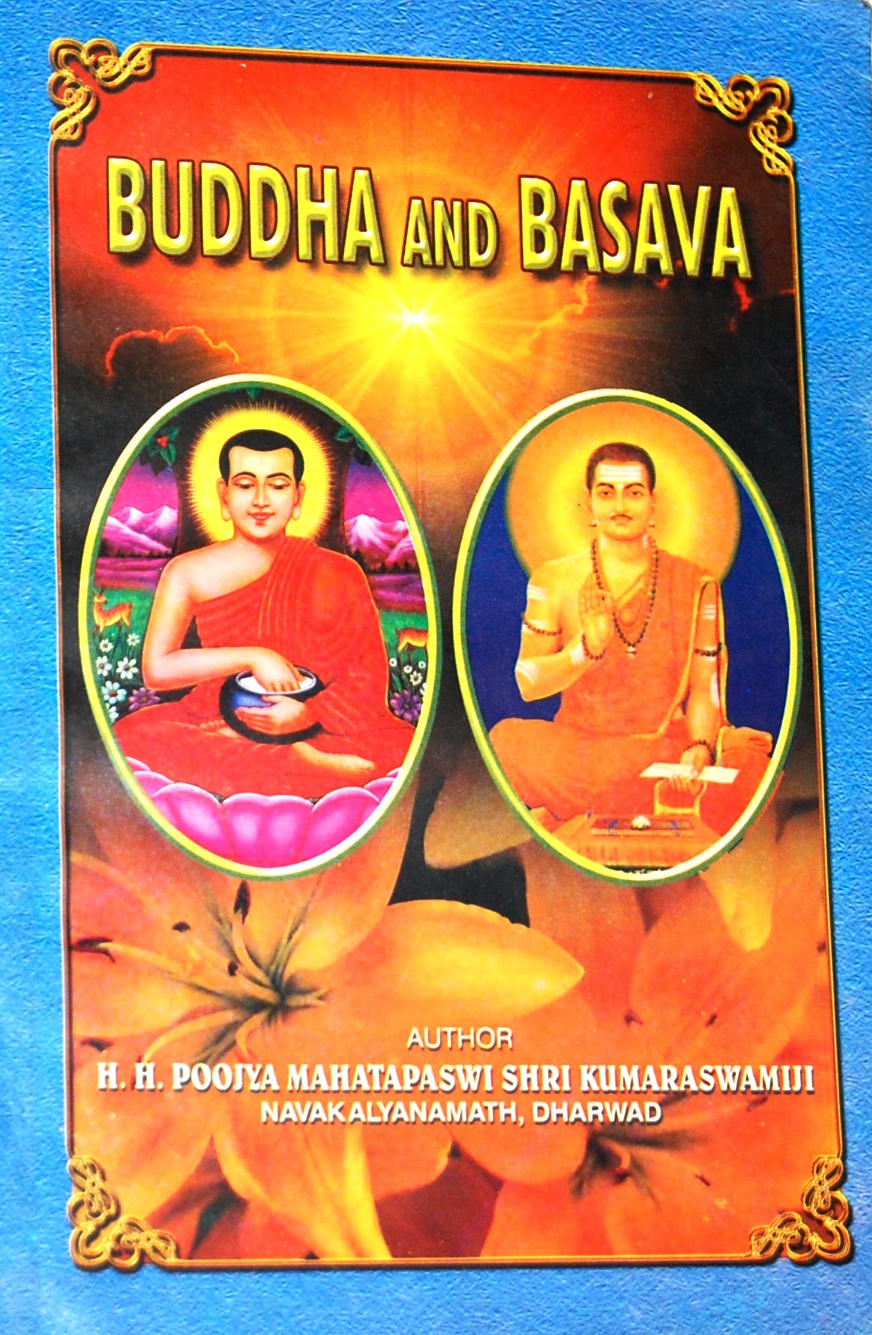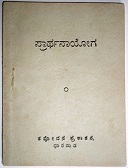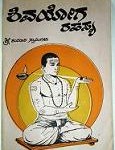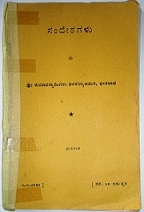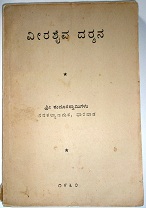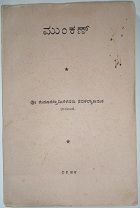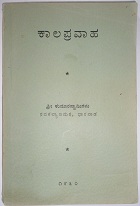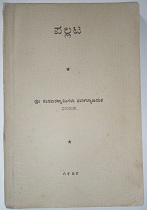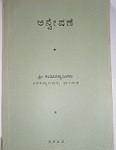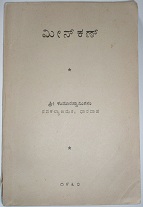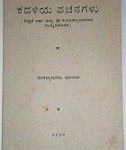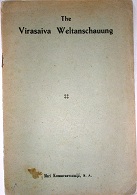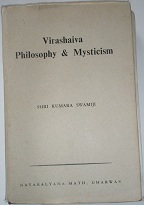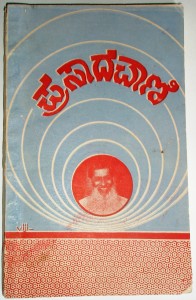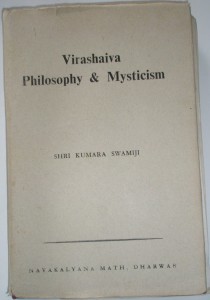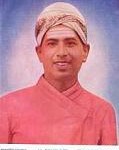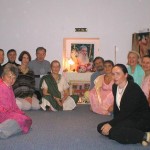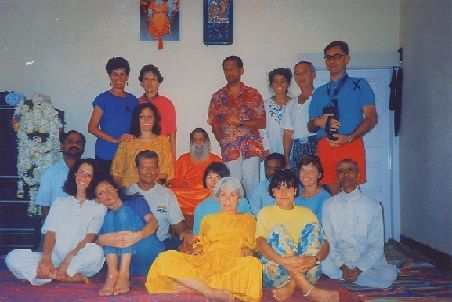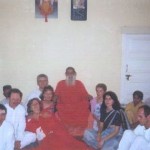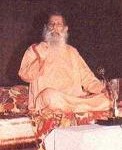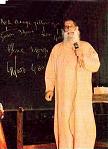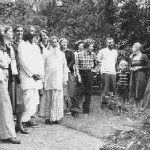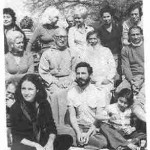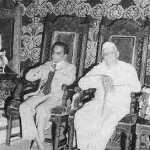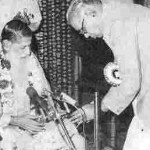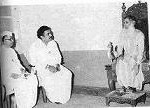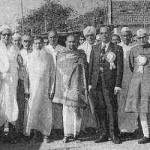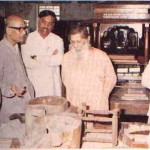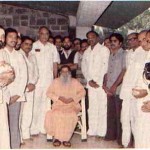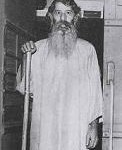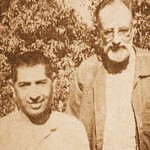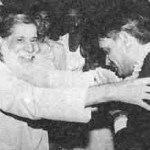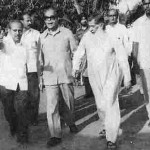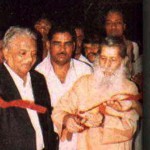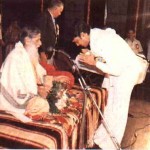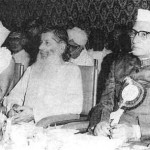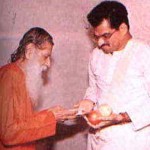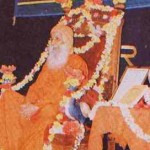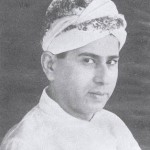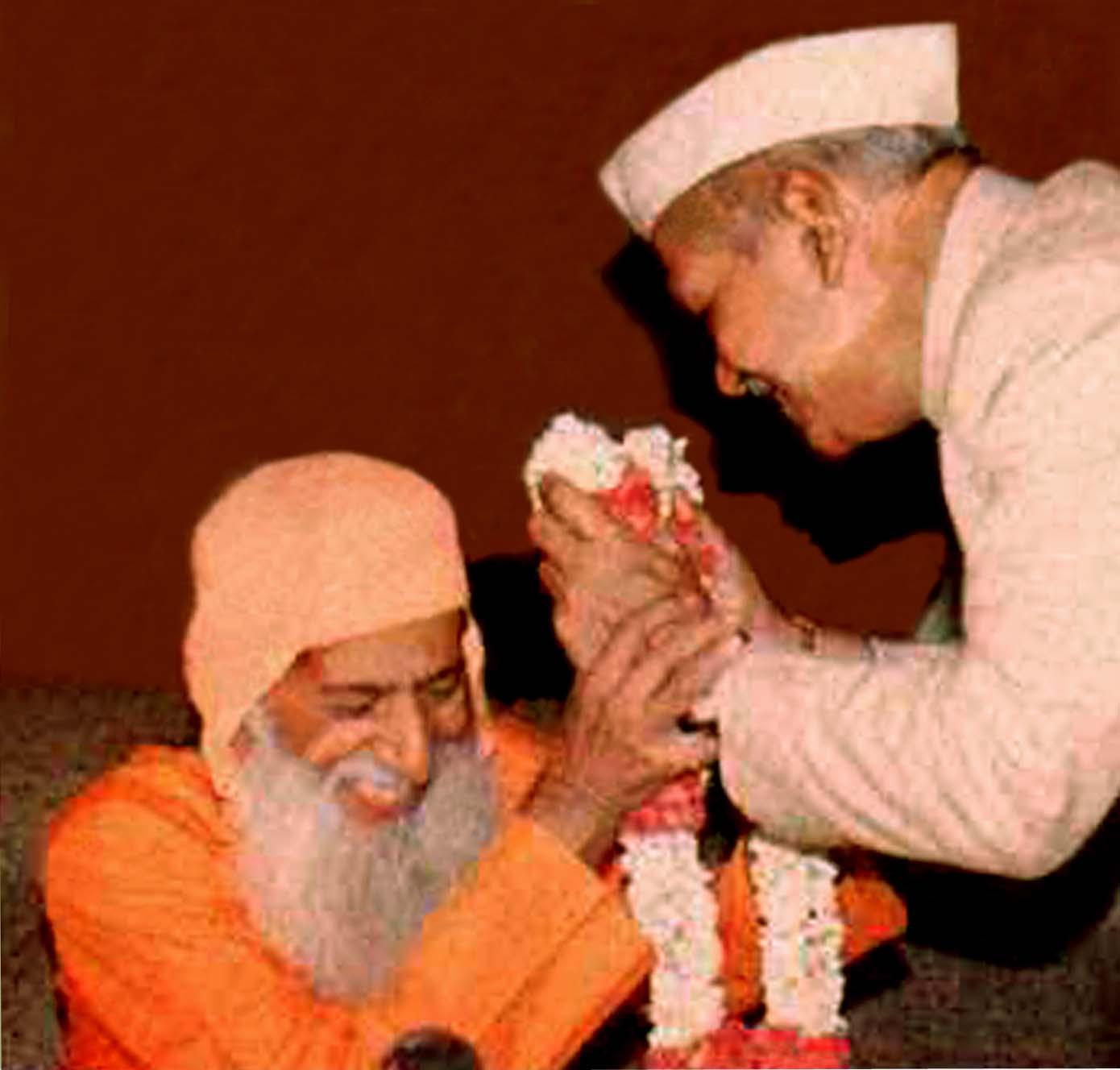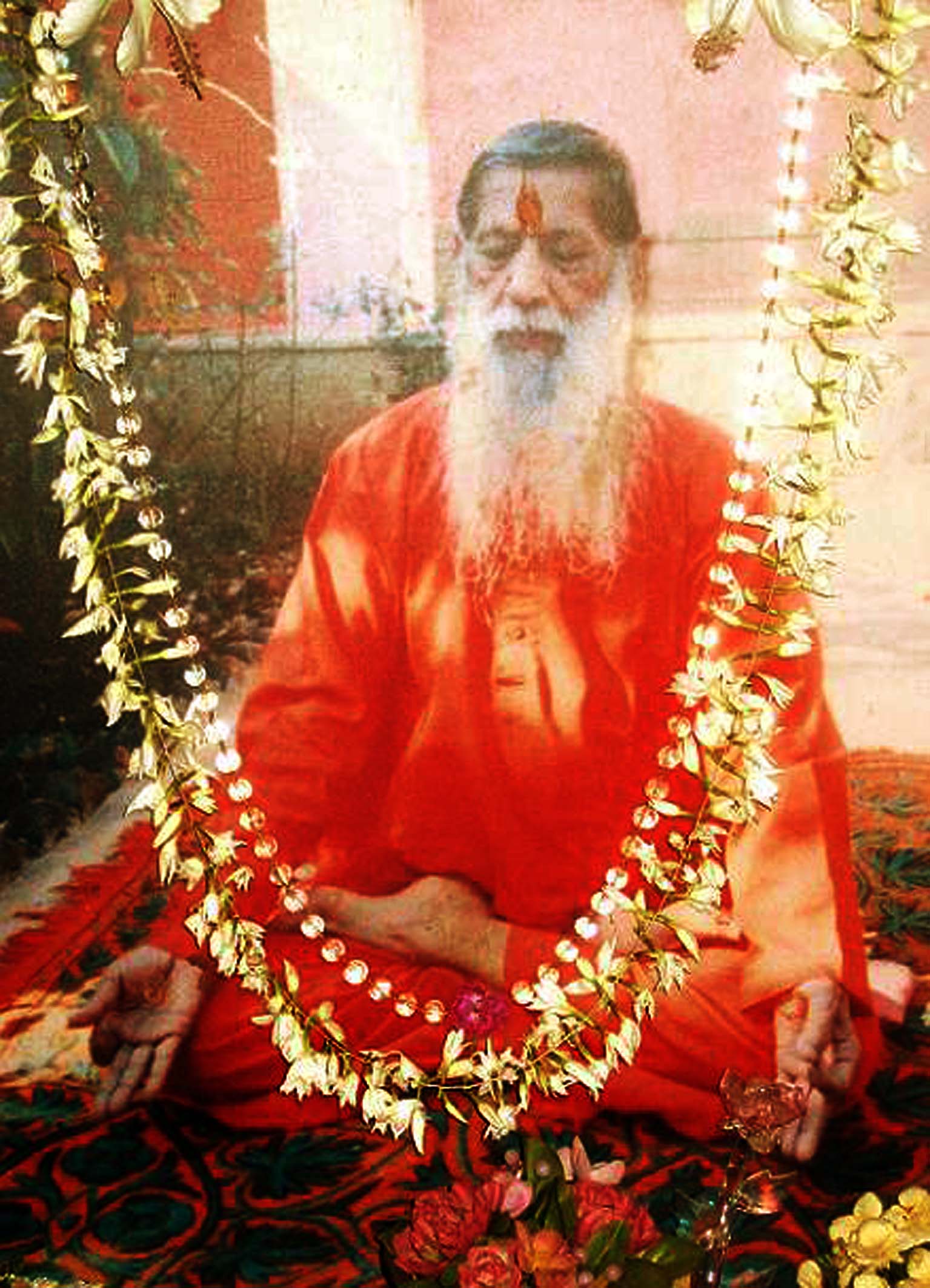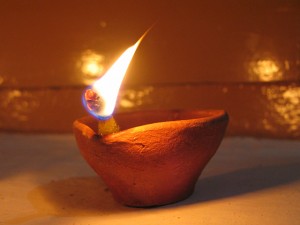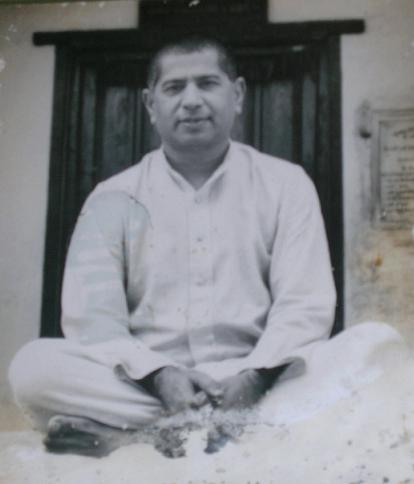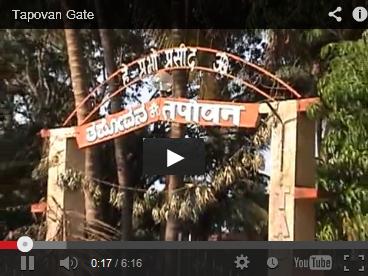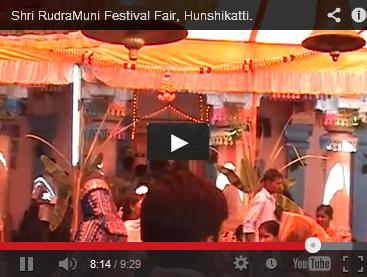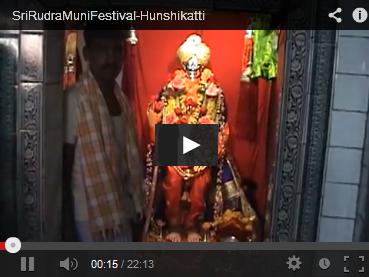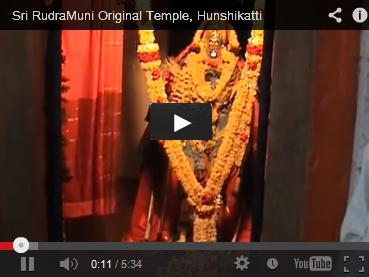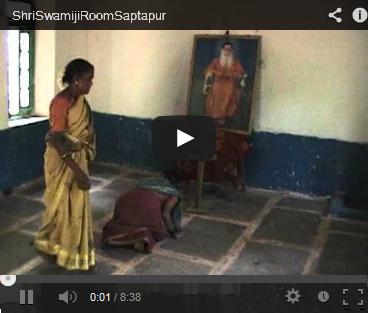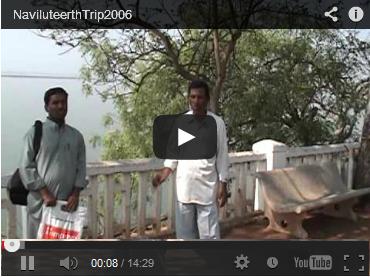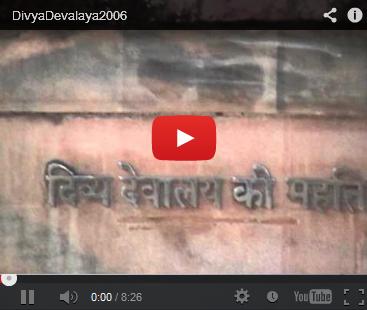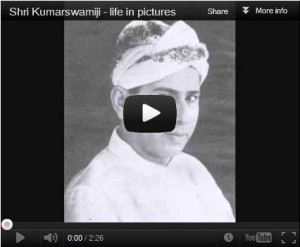The Upanishads try to express the nature of Reality in negative terms. It is Nirakara, without form; Nirvishesha, without particularity; Nirupadhika, without limitation; Nirguna, without qualities. By denying all attributes and relations to it, the Reality is reduced to the bare existence which is absolute vacuity. But the negative account is intended to express transcendence of Reality of which nothing may be predicated save in the negation and this prediction does not deprive it of is positive being. It is the inexhaustive focundity of Reality that bursts through all forms, names and functions. When the Reality is addressed as Shunya or Bayalu, it only means that it is something which created beings cannot conceive and not that It is absolutely nothing. The Scriptures or the sayings of saints and sages can neither demonstrate nor decipher It, but at best they can only bear witness to It. In the Divine status, Reality is its own immediate witness, its own self-awareness, its own freedom of complete being. To achieve this Divine status is the one object of the Shunya-sampadane.
The 12th century Veerashaiva saints (Sharanas) of Karanatak made a unique contribution to the Kannada literature. The Sharanas are primarily truth-seekers and secondarily, literary figures. In their search for the fundamental truth, the ineffable joy they experienced welled out in profuse strains from the depth pf their heart. The sayings that have sprung out from the divine afflatus of the Sharanas are known as Vachanas. Since these pithy sayings are the outpourings of their heart, they have a unique quality of directly touching the heart, mind and soul of the masses and stirring all that is sublime and innately beautiful. Thoughts on metaphysical concepts such as God and soul, bondage and liberation from the mundane (Moksha), here and hereafter, reason and revelation are found in abundance in the vachana literature. Along with them, the psychological concepts such as conation, cognition, affection and intuition, which are essential for spiritual discipline, also find a place in the vachanas. Since it contains all that is necessary for self-realization, it is sometimes known as Vachana Shashtra (Spiritual Science). The path of the pilgrim’s progress characterized by different stages; the process of spiritualization; the way of transforming human life into divine life, the mode of accomplishing the welfare of society through “Dasoham” or service; the harmony of word and deed, of thought and action; the reality of the world; the greatness of human life; the supremacy of God; love of nature; faith in human endeavour; all are treated in the vachanas with equal eloquence and brilliance.
History bears witness to the fact that the saints were attracted to Basava of Kalyana, who was Bijjala’s Prime Minister. It is learnt from historical records that Bijjala, who usurped the Chalukya throne, ruled over Kalyana, a city of historic importance during the 12th century. Kalyana is located about sixty miles from Gulburga, Karnataka state. Basava founded the religo-cultural-social parliament of spiritual seekers known as the Anubhava Mantapa. It was rather an “Academy Hall of the Saints” that bore witness to the glory of God and to the relief of man’s estate. It was the nucleus around which gathered men and women of various religious persuasion and experience, who accepted the Veerashaiva faith and expressed their experience in the form of vachanas and presented them before Allama Prabhu, the president of the Anubhava Mantapa and the congregation of the Sharanas for further debate, discussion and rectification. Bhandari Shantaraga got them recorded and/or copied on palm leaves. By this process, a vast number of vachanas came into existence. Siddharameshwar of Sholapur has enumerated in two of his vachanas that both female and male saints, whose number was a legion, composed vachanas. One of Prabhu’s vachana suggests that he alone wrote 100 million vachanas !!!
The sayings of the sharanas are like the stars that twinkle in the firmament of Kannada language; they are the pearls reclaimed form the ocean of Kannada literature. They command universal appeal. Since they are characterized by personal experience and inspiration; easy diction and ever fresh feeling of exuberance. Their style is simple but sublime in substance, rich in matter and resonant in manner; yet they are free from ostentation of pedantry. The Sharanas were not pedants but pious souls; they did not toil and labour to stuff the memory, leaving the conscience and understanding unfurnished and void. By dint of devotion to the great cause and detachment from trifles, they attained perfection, which consists not in extraordinary things, but in doing ordinary things extra-ordinarily well. They imparted their teachings to the masses in the native language with the vigor of an ascetic, the love of a mother, the sympathy of a friend, the zeal of a reformer and the serenity of a saint. Hence, there is no wonder if they attracted the attention of the lay and the learned alike. They gave a new orientation to social life by releasing the pent up energy of the disenchanted masses.
The radical movement initiated by Basava in the religious, social and economic spheres all of a sudden met with obstacles, consequent upon the political catastrophe which occurred in the last days of Bijjala’s reign. This untoward event forced the Sharanas to scatter, but before they so retired, they had fulfilled their unannounced mission. Some of the noted Sharanas of the Anubhava Mantapa migrated to the mountains of Shri Shaila, others to the borders of Godavari and still others emigrated to Kappadi Sangam, Ulavi and Banavasa. They carried with them the treasures of the vachana literature, which was very near and dear to their hearts, and preserved it in spite of formidable obstacles. But thenm there is room to hazard a guess that a large portion of the vachana literature was lost as a result of the Moslem invasion of Karanatka. The present day vachana literature which the Lingayats are fortunate to inherit is comparatively a very small part of the original treasure house. Following the dispersion of Sharanas, which took place in the seventies of 12th century, there set in the darkest period in the annals of the Veerashaiva religion, which lasted almost two hundred years. During this period of eclipse, absolutely nothing happened. This is not because the Lingayats were not interested but because they were scared of their life and their family’s well being. For fear of life, it was not possible for the people of that epoch to openly proclaim their religious faith and affiliation. The contemporary forces were just too brutal and strong to permit the renaissance and resurgence of Lingayatism. The rulers of that epoch did every thing they could to destroy Basava’s legacy, for they feared that they themselves might be swept by the rising tide of social justice and egalitarian way of life commanding and demanding everybody do his/her Kayaka. This period of two hundred years is reckoned as the “solar eclipse” of the Veerashaiva religious movement.
The story of Lingayats, following the dispension of Basava and his contemporary Sharanas, is one of the untold and unsung epics of Indian history in general and of the history of Karnatak in particular. May be it was not recorded, for fear the future generations would despise the timidity of those who perpetuated the tragic events that caused the massacre of innocent Sharanas. Driven from their homes by Bijjala’s son and his unruly soldiers and scattered by the fear of their life, persecuted and decimated by the practioners of the orthodox religion, harried by the feudal system from owning land and by the guilds from taking parts in industry, shut up inside the caves and narrowing pursuits, mobbed by the fanatics and plundered by the greedy chieftains and hunted by the blood thirsty soldiers of Bijjala, the Veerashaivas miraculously survived all calamities and dangers imposed in their path. This exemplified not only their courage and beliefs in the lofty teachings of their Sharanas but also their conviction that truth will prevail and ultimately conquer evil. This wonderful band of people maintained in body, spirit and soul the cultural integrity and guarded their religious heritage – the Vachana Literature – at the cost of their own safety and life so that the future generations of Veerashaivas could be proud of their religious heritage and legacy and carry on the torch. They waited for the day of their deliverance so that they could bequeath their heritage to future generations. What drama could rival the grandeur of the sufferings of the faithful and the glory of the fulfillment of their cherished dreams? What fiction could match the romance of this reality? Today their expectations have almost been fulfilled. Their legacy is brighter than ever before. The only sour note is that we have become a divided community and a bunch of selfish groups. We seem to have forgotten the sacrifices that our forebearers made so that we may enjoy the fruits of their travail. However, we are seeing a silver lining! The educated generation is trying to overcome these obstacles and create a cohesive society, with the goal that Basava preached so eloquently in the 12th century.
Bradley observes that there is truth in every idea, however false; there is reality in every existence, however slight; and we may add that there lurks a ray of light in every phase of darkness, however dense. The Kakatiya Kings of Orangalla came forward to shoulder the responsibility of preserving the Veerashaiva faith. In an inscription of 1261 A.D., there is a mention of Vishveshwar Shivadev – the teacher of the Kings and poet laureate – strove hard to revive and propagate the Veerashaiva culture introduced by Basava. Of Kakatiya Kings, the reign of Ganapthi Deva was most prolific; it was during his rule that Shivadeva established an institution named Vidyamantapa patterned after the Anubhava Mantap of Kalyana and through this institution he helped the noble cause of the Sharanas to take deep roots in the hearts of men and women and popularized the study of the Veerashaiva literature. Palkurikeya Somadeva (1200), Hampeya Harishvara and Raghavanka (1215), Bhimakavi (1361), Padmaraj (1385) and a host of others has eulogized the Sharanas in their works. A good many sayings of the Sharanas have found their way in the poems and Puranas of these writers. In spite of this, the two hundred year period produced no creative work.
The Veerashaiva culture again had to face a sudden and great disaster as the sovereignty of the Kakatiya Kings fell victim to the Moslem invasion. It is indeed gratifying to learn that the Veerashaiva culture was responsible for the spread of the democratic tendencies in the rule of the Kakatiya Kings. It is even more interesting to remember that the same Veerashaiva culture was responsible for the rise of the Vijayanagar Empire. Hardly a century had elapsed after the establishment of Vijayanagar empire, when love for and interest in Vachana literature and Veerashaiva religion manifested again. In the rule of Proud Devaraja II, the 101 Viraktas (ascetics), feeling the pulse of the environment, pledged themselves to the task of awakening the religious conscience of the common men and of rekindling the dormant interest in the vachana literature. They were apprehensive of the grave situation which would overtake vachana literature if they remained indifferent, sitting on the fence and self-centered. Consequently, from the beginning of the 15th century, concerted efforts to rescissitate Vachana Sahitya were made on a bigger scale. This mammoth process continued until the end of the 15th century, leaving an ever lasting influence on the succeeding generation of Veerashaivas. Thus, two centers of activity existed at that time; one was Vijayanagara, where the 101 Viraktas under the patronage of Jankanarya, the Prime Minister of proud Devraja II, engaged themselves in reviving the religious literature of Sharanas. And the other was Edeyuru in Tumkur district, where a host of disciples of Tontada Siddhalinga – the religious sovereign and renowned Yogi – occupied themselves with the work of rehabilitating the vachana literature. It might be presumed that there also were other centers like Puligere, Gummalapura, Gulura and Suttura, where active interest in the vachana was evinced.
The task to which the 101 Viraktas pledged themselves ramified into three directions:
1) compilation of the vachanas,
2) their systematic classification and
3) writing extensive commentary on them so as to make them intelligible to the ordinary folks.
As an integral part of this task, they attempted to interpret the vachana religion into the Sanskrit language to attract the attention of the educated people of that time. They also tried to find the source of the narration of the vachana religion in Sanskrit if there was any. After the pattern of the Sharanas, who had imbibed the spirit of integral realization, they too wrote a good many vachanas embodying the principles of the Veerashaiva religion. The sustained study of vachana literature undertaken by the Viraktas was varied and deep. They realized the vastness of the vachana literature, which had hitherto been smothered and scattered in several sites. They culled and collected the sayings of the Sharanas into an anthology of vachanas called “Sarva-puaratanara Vachangalu”. They arranged them according to the stages essential to the further progress of the pilgrim. The vachanas thus organized became known as “Sthalada Vachangalu”. The name Ekottara Shatshtala reveals another scheme of arranging the sayings according to the stages of the psychological discipline. They wrote elaborate commentaries on the enigmatic sayings (Bedagina Vachanagalu) that had sprung up from the divine afflatus of the Sharanas. They strung together the sayings in a lucid manner to enable the laymen to comprehend the real meaning of the vachanas. Some of these compilations are short, some long, some easy and entertaining, some terse and reflective. The compilations were formulated in accordance with the loftiness of their content and meaning. The work of compilation itself was guided by the love, interest and aspiration, which the Viraktas cherished for the vachana literature.
Swantantra Siddalinga and a host of others, who were inspired by the advice of Tontada Siddalingayati, came forward to serve the noble cause of vachana literature. Tontada Siddalingayati was a yogi of the highest order, an enlightened philosopher and an exalted mystic. Being inspired by his precept, preaching and practice, his trusted seven hundred disciples devoted their lives to the propagation of the Veerashaiva religion and culture. Being pleased with their work, Tontada Siddalingayati entrusted to them the responsibility of carrying out the propaganda according to their ability, interest and experience. Thus, the work of compilation on the one hand and the propagation of the Veerashaiva principles on the other hand, continued to spread and sway the minds of the populace.
Of all the compilations put together, the Shunya-sampadane bids fair to be the first and foremost. Shynya-sampadane otherwise known as Prabhudevar Shunya Sampadane, simply because Prabhu is the central figure around whom the entire collection revolves. During the 12th century, Kalyana witnessed a renaissance that wrought a monumental change in the social, economical and religious outlook of the masses. Prabhu and Basava were the dominating personalities of this renaissance. Prabhu presided over the Anubhava Mantapa founded by Basava. He has recorded the deliberations of various Sharanas who participated in the debates and discussions on economic, social, religious and spiritual aspects of life. This account is faithfully reflected in the Shunya-sampadane in the form of a dialogue. Incidently, the dialogues of Prabhu are characterized by his sublime experience, greatness of metaphysical insight and height of spiritual ecstasy.
The word ‘Sampadane’ has different shades of connotation and meaning. First of all, it means a discourse or a lesson. Gulura Siddaviranna has made frequent use of sampadane in this sense. He, in fact, concludes every chapter with the words. “Thus ends the second lesson of Sister Muktayi in the Shunya-sampadane, wherein Prabhu had led the mystic discussions among the celebrated and ancient saints.” Secondly in one of his sayings, Prabhu himself has used the word ‘sampadane’ to mean “an opinion”:
“There is an opinion that Veda is great, “sampadane” There is an opinion that Agama is great,
There is an opinion that Scripture is great,
There is an opinion that mythology is great
There is an opinion that affirmation is great
There is an opinion that negation is great
Various opinions veer round
Because of the lack of understanding
Oh! Guheshwara!”
Thirdly, sampadane is used in the sense of an occupation of the scribe. There is a tradition among the Viraktas that at the time of initiation, the Guru makes a present of ‘books of wisdom’ to the disciple. This tradition seems to have been in vague at the time of Tontada Siddalingayati. The books of wisdom consist of Guheshvara vachana, Karana Hasige, Misrarpana, Siddharameshvara Mantragopya etc. The disciple used to receive this bundle of books known as Shashtrada Kattu, from his preceptor. For the disciple, the bundle of books was a rare gift and a proud possession. When printing was unknown in the country, the disciples would have them written by the scribes. The class of scribes, who would thus commit to writing the sayings of the saints on palm leaves, came to be known as the Sampadaneya Samaya. For instance, we come across such names as Sampadaneya Channanjadeva, Sampadaneya Siddhaviranna, Sampadaneya Bolabasavesha, Sampadaneya Parvatesha etc. in the Veerashaiva literature. Lastly, Sampadane means an accomplishment. Kinnari Bommanna gives a graphic account of Sampadane as an accomplishment. He observes in one of his vachanas:
“By conversing with Prabhu, vairagya (ascetism) is accomplished,
By conversing with Basava, Bhakti (devotion) is accomplished,
By conversing with Prabhu, Chennabasava, Grace is accomplished,
By conversing with Prabhu, Madivala, wisdom is accomplished,
By conversing with Prabhu, Sakalesha, peace is accomplished,
By conversing with Prabhu, Moligayya, selfless service is accomplished,
By conversing with Prabhu, Nilamma, the worship of linga is accomplished,
By conversing with Prabhu, Nagamma, the greatness is accomplished,
In the name of Tripurantakalinga,
Oh! yeah! Remain not indifferent to the conversation of the Saints”.
The word sampadane in the sense of accomplishment as adumbrated by Kinnari Bommanna, is strongly anticipatory of a saying of Sri Aurobindo. In his “Thoughts and Glimpses”, he describes them, “Not to go on forever repeating what man has already done is our work, but to strive at new realizations and undreamed of mysteries. Time and soul and world are given to us for our field, vision and hope and creative imagination stand for our prompters, will, thought and labor are our all effective instruments. What is there now that we have yet to accomplish? Love, for as yet we have only accomplished hatred and self-pleasing, knowledge, for as yet we have only accomplished error and perception and conceiving; Bliss, for as yet we have only accomplished pleasure, pain and indifference; Power, for as yet we have only accomplished weakness and effort as a defeated victory; Life, for as yet we have only accomplished birth and growth and dying; Unity, for as yet we have only accomplished war and association. In a word, Godhead, to remake ourselves in the divine image.”
In vacahana literature, the Absolute is termed Bayalu or Shunya. Bayalu means void or emptiness, emptimess does not mean relativity, phenomenality or nothingness, rather it means the Absolute or something of the transcendental nature. No limiting qualities can be attributed to the Absolute; while it is immanent in all concrete and particular objects, it is in itself ineffable and undefinable. Shunya or emptiness is one of the important notions in the Mahayana school. This school upholds Shunya on the ground that universal negation, in the philosophy of Prabhu, is an inevitable phenomenon. Sthala, which is otherwise known as Samvita or Shiva, is a technical term for the Absolute in Veerashaiva philosophy; and sthala is defined by the Veerashaiva philosophers as the source and support of all phenomenal existence, as the ground and goal of all terrestrial evolution. Empirical reality or phenomenal manifestation is the imperfect unfolding in time of an eternally complete and self-existence Being or Sthala. Sthala, therefore, is the infinite and eternal rest into which all motion and dialectic are absorbed. Since eternal rest is the negation of every kind of vibration, it is designated as Shunya or Bayalu.
In the history of philosophic thought there are various ways in which in the problem of Supreme Reality has been addressed. Man has attempted to express this Reality through affirmation, through negation and through all other possible means, yet nothing has been adequate nor has any means of expression satisfied him. However, he had to take recourse to mathematics to express Reality and by means of mathematical symbols; the Reality is described as ekam ev advitiyam brahem – the one without a second. But even the number One has some value which is obvious to the human intellect. The Supreme Reality or the Absolute is beyond this number one. How to represent it? Is it to be represented by zero or Shunya? The Supreme Reality is above all human values, though it is the source and support of all truth, goodness and beauty. It is beyond all predicates, for anything said about it is either insufficient or too much. All mystic experience has found that when the ego is exhausted, there remains but the Plenum, void or Shunya. This plenum or the ultimate spiritual essence is termed Shunya or Bayalu in Veerashaivism; the statement of this Shunya is known as the Shunya-sampadane. Allam Prabhu realized the Absolute and attained this plenum.
The Upanishads try to express the nature of Reality in negative terms. It is Nirakara, without form; Nirvishesha, without particularity; Nirupadhika, without limitation; Nirguna, without qualities. By denying all attributes and relations to it, the Reality is reduced to the bare existence which is absolute vacuity. But the negative account is intended to express transcendence of Reality of which nothing may be predicated save in the negation and this prediction does not deprive it of is positive being. It is the inexhaustive focundity of Reality that bursts through all forms, names and functions. When the Reality is addressed as Shunya or Bayalu, it only means that it is something which created beings cannot conceive and not that It is absolutely nothing. The Scriptures or the sayings of saints and sages can neither demonstrate nor decipher It, but at best they can only bear witness to It. In the Divine status, Reality is its own immediate witness, its own self-awareness, its own freedom of complete being. To achieve this Divine status is the one object of the Shunya-sampadane.
Shivagana Prasadi Mahadevayya (1450) was the first to conceive of the compilation of the Shunya-sampadane, and there are four compilations in all. The second compiler was Siddhalingadeva of Gummalapura, the third was Gulura Siddhaviranna and the fourth was Halagedeva. The first compilation consists of 1013 sayings, the second 1449, the third 1343 and the fourth 1700. Of these four compilations three are manuscripts, only the third is available as a published book. Hence we have undertaken the translation of the compilation of Gulura Siddhaviranna’s work. Gulura Siddhaviranna had undoubtedly the heart of a poet. His poetic sensibilities are manifest in his prose. In the range of interest and in the power of imagination, he excels all other compilers. Prabhu is the central figure in all the compilations. Shivagana Prasadi Mahadevayya following the lead of Harihar, has taken a too human view of Prabhu, while Gulura Siddhaviranna following the lead of Chamarasa, a too divine view of him. But both are unanimous in their verdict on Prabhu as a true Jangama, “the Superman who has evolved a large impersonal personality and a heightened sympathy into constant experience of world-oneness.” Mahadevayya, Siddhalingadeva and Siddhaviranna – have set before them the one common ideal, which is the portrayal of the lives of the saints with their accomplishment, their mystic experience, their peculiar character and their profound faith in God on the strength of their own sayings. They have emerged triumphant out of this adventure. Their attempt to give a synoptic view of the sayings of the Sharanas culled and collected from various sources not critically but credulously, is noteworthy. In arranging the sayings in the dialogue form, they have followed their own method. Though the vocabulary is the same for all compilers, there is visible a twist and a turn in a word, sentence or phrase here and there. But the motif does not suffer from any defect from the devoted ideal.
This article is taken from H.H.Shri Kumarswamiji-s book, ‘Veerashaivism: Comparative Study of Allama Prabhu,Basava,Shunya Sampadane and Vachana Shastra’.











